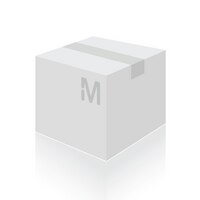507858 Sigma-AldrichPANSORBIN® Cells
Produtos recomendados
Panorama geral
| Replacement Information |
|---|
Preço e Disponibilidade
| Número de catálogo | Disponibilidade | Embalagem | Qtde/Emb. | Preço | Quantidade | |
|---|---|---|---|---|---|---|
| 507858-1GM |
|
Frasco de vidro | 1 gm |
|
— | |
| 507858-50GM |
|
Frasco de vidro | 50 gm |
|
— |
| Product Information | |
|---|---|
| Activity | ≥2.0 mg human IgG/100 mg cells |
| Form | Homogeneous, milky suspension |
| Formulation | Supplied as a 10% suspension of Staphylococcus aureus cells in PBS, 0.1% NaN₃, pH 7.2. |
| HS Code | 3002 59 00 |
| Quality Level | MQ100 |
| Applications | |
|---|---|
| Key Applications | Immunoprecipitation |
| Biological Information |
|---|
| Physicochemical Information | |
|---|---|
| Contaminants | Viable cells: ≤2500 cells/ml |
| Dimensions |
|---|
| Materials Information |
|---|
| Toxicological Information |
|---|
| Safety Information according to GHS |
|---|
| Safety Information |
|---|
| Product Usage Statements |
|---|
| Storage and Shipping Information | |
|---|---|
| Ship Code | Ambient Temperature Only |
| Toxicity | Standard Handling |
| Storage | +2°C to +8°C |
| Do not freeze | Yes |
| Packaging Information |
|---|
| Transport Information |
|---|
| Supplemental Information |
|---|
| Specifications |
|---|
| Global Trade Item Number | |
|---|---|
| Número de catálogo | GTIN |
| 507858-1GM | 04055977272499 |
| 507858-50GM | 04055977271942 |
Documentation
PANSORBIN® Cells MSDS
| Título |
|---|
PANSORBIN® Cells Certificados de análise
| Título | Número do lote |
|---|---|
| 507858 |
Referências
| Visão geral de referência |
|---|
| Kierszenbaum, F., et al. 1991. Immunology 74, 317. Meikle, P.J., et al. 1991. J. Biol. Chem. 266, 22569. Ezaki, O., et al. 1989. Biochem. Biophys. Res. Commun. 159, 1368. Murakami, H., et al. 1988. Biochem. J. 256, 917. Kessler, S.W. 1975. J. Immunol. 115, 1617. |
Citações
| Título | |
|---|---|
|
|
| Ficha de dados | ||||||||||||||||||||||||||
|---|---|---|---|---|---|---|---|---|---|---|---|---|---|---|---|---|---|---|---|---|---|---|---|---|---|---|
|
Note that this data sheet is not lot-specific and is representative of the current specifications for this product. Please consult the vial label and the certificate of analysis for information on specific lots. Also note that shipping conditions may differ from storage conditions.
|









